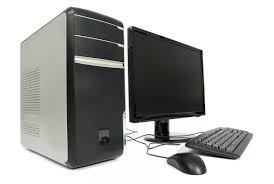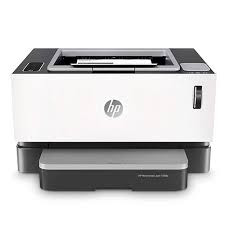What is a Computer?
An electronic device that stores, retrieves and processes data, and can be programmed with instructions. A computer is composed of hardware and software, and can exist in a variety of sizes and configurations.
Hardware
The term hardware refers to the physical components of your computer such as the system unit, mouse, keyboard, monitor etc.
Types of Computers
Mini and Mainframe Computers
Very powerful, used by large organizations such as banks to control the entire business operation.
Very expensive!
INPUT DEVICES
Mouse
Used to ‘drive’ Microsoft Window
keyboard The keyboard is still the commonest way of entering information into a computer
Trackball Trackballs an alternative to the traditional mouse and often used by graphic designers
OUTPUT DEVICES
VDU
The computer screen is used for outputting information in an understandable format
Printers
There are many different types of printers In large organizations laser printers are most commonly used due to the fact that they can print very fast and give a very high quality output.
Plotters
A plotter is an output device similar to a printer, but normally allows you to print larger images.
Speakers
Enhances the value of educational and presentation products.
Speech synthesizers
Gives you the ability to not only to display text on a monitor but also to read the text
to you
Storage Devices
Hard disk drives
Hard disk drives are an internal, higher capacity drive which also stores the operating system which runs when you power on the computer.
Speed:
The speed of a hard disk is often quoted as "average access time" speed, measured in milliseconds. The smaller this number the faster the disk.
Capacity:
Enormous! Often 40/80 Gigabytes. A Gigabyte is equivalent to 1024 Megabytes.
Floppy Disk Drives
Floppy disk drives allow you to save work on small disks and take the data with you.
Speed: Very slow!
Capacity: Normally 1.44 Mbytes.
CD-ROM Disk
Much slower than hard disks. The original CD-ROM speciation is given a value of 1x
speed, and later, faster CD-ROMs are quoted as a multiple of this value.
Capacity: Around 650 Mbytes and more
DVD Drive
Speed: Much faster than CD-ROM drives but not as fast as hard disks.
Capacity: Up to 1.7 Gbytes.
RAM (Random Access Memory)
RAM main 'working' memory used by the computer. When the operating system loads from disk when you first switch on the computer, it is copied into RAM. As a rough rule, a Microsoft Windows based computer will operate faster if you install more RAM. Data and programs stored in RAM are volatile (i.e. the information is lost when you switch off the computer).
ROM (Read Only Memory )
ROM – Read Only Memory Read Only Memory (ROM) as the name suggests is a special type of memory chip that holds software that can be read but not written to. A good example is the ROM-BIOS chip, which contains read only software. Often network cards and video cards also
Computer Memory Is Measured
Computer Memory Is Measured Bit All computers work on a binary numbering system, i.e. they process data in one's or zero's. This 1 or 0 level of storage is called a bit.
Byte A byte consists of eight bits.
Kilobyte A kilobyte (KB) consists of 1024 bytes.
Megabyte A megabyte (MB) consists of 1024 kilobytes.
Gigabyte A gigabyte (GB) consists of 1024 megabytes.
Microprocessors
The brain of the computer PCs primarily use microprocessors (sometimes called the chip). The older Intel versions include the 386, 486 and now the Pentium line.
The CPU (Central Processing Unit) is normally an Intel Pentium (or equivalent) and it is one of the most important components within your computer.
It determines how fast your computer will run and is measured by its MHz speed.
Thus a 600 MHz Pentium is much faster than say a 400MHz Pentium CPU.
It is the CPU that performs all the calculations within the computer.


.jpg)
.jpg)
.jpg)


.jpg)
.jpg)
.jpg)

.jpg)
.jpg)















